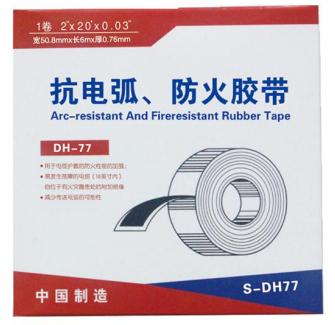Understanding Insulation Tape A Versatile Tool for Various Applications
Insulation tape, also known as electrical tape, is a vital tool in both professional and DIY contexts. Designed to provide electrical insulation, this versatile tape is used extensively in residential, commercial, and industrial settings. Understanding its functions, types, and applications can help users select the right tape for their specific needs.
At its core, insulation tape is typically made from PVC (polyvinyl chloride) or rubber, materials chosen for their excellent electrical insulating properties. Its primary function is to protect electrical wires and contacts from moisture, dust, and other environmental factors that could lead to conductivity issues or shorts. With a strong adhesive backing, insulation tape can conform to various shapes and surfaces, ensuring a secure seal that enhances safety in electrical systems.
One of the key characteristics of insulation tape is its voltage rating. Different tapes are designed to handle different voltage levels, and selecting the correct tape is crucial for ensuring safety and compliance with electrical standards. Commonly, insulation tape is rated for voltages ranging from 600V to 35kV, with specific types formulated for high-voltage applications. Users should always check the specifications of the tape, particularly when dealing with high-stakes electrical work.
insulation tape

In addition to its insulating properties, insulation tape is available in various colors. This color-coding system aids in identifying different circuits or wires, making it a critical tool for electricians. For instance, black tape is commonly used for general insulation, while red tape may indicate a live wire. This visual differentiation can prevent confusion and enhance safety during installations or repairs.
The applications of insulation tape extend beyond electrical work. Many industries use it for bundling wires, identifying cables, and even providing temporary fixes for leaking hoses or sealing ducts in HVAC systems. In homes, it can help with quick fixes, such as repairing ripped furniture or sealing frayed cords, showcasing its multifunctional use.
When using insulation tape, proper application is crucial. The tape should be wrapped around the wire without overlapping too tightly, as excess tension can compromise its effectiveness. Additionally, users should avoid using insulation tape on wires that exceed its rated voltage, as this can lead to potential hazards.
In summary, insulation tape is more than just a simple adhesive strip; it is a specialized tool that offers safety, organization, and versatility across various applications. Whether you're an electrician tackling a complex wiring project or a homeowner making basic repairs, understanding the significance of insulation tape can ensure effective and safe outcomes. As technology advances and new materials emerge, the role of insulation tape will undoubtedly continue to evolve, making it an essential item in any toolkit.
-
XIANGFAN Rubber Tape-Ultimate Solutions for All Your Insulation NeedsNewsJun.24,2025
-
XIANGFAN Rubber Tape-Protection for Industrial and Residential ApplicationsNewsJun.24,2025
-
XIANGFAN Rubber Tape: Superior Safety and Sealing for Demanding EnvironmentsNewsJun.24,2025
-
XIANGFAN Rubber Tape: Reliable Solutions for Every Electrical ChallengeNewsJun.24,2025
-
XIANGFAN Electrical & Industrial Tape: Powering Reliability Across IndustriesNewsJun.24,2025
-
XIANGFAN Electrical & Industrial Tape: Excellence in Every ApplicationNewsJun.24,2025
